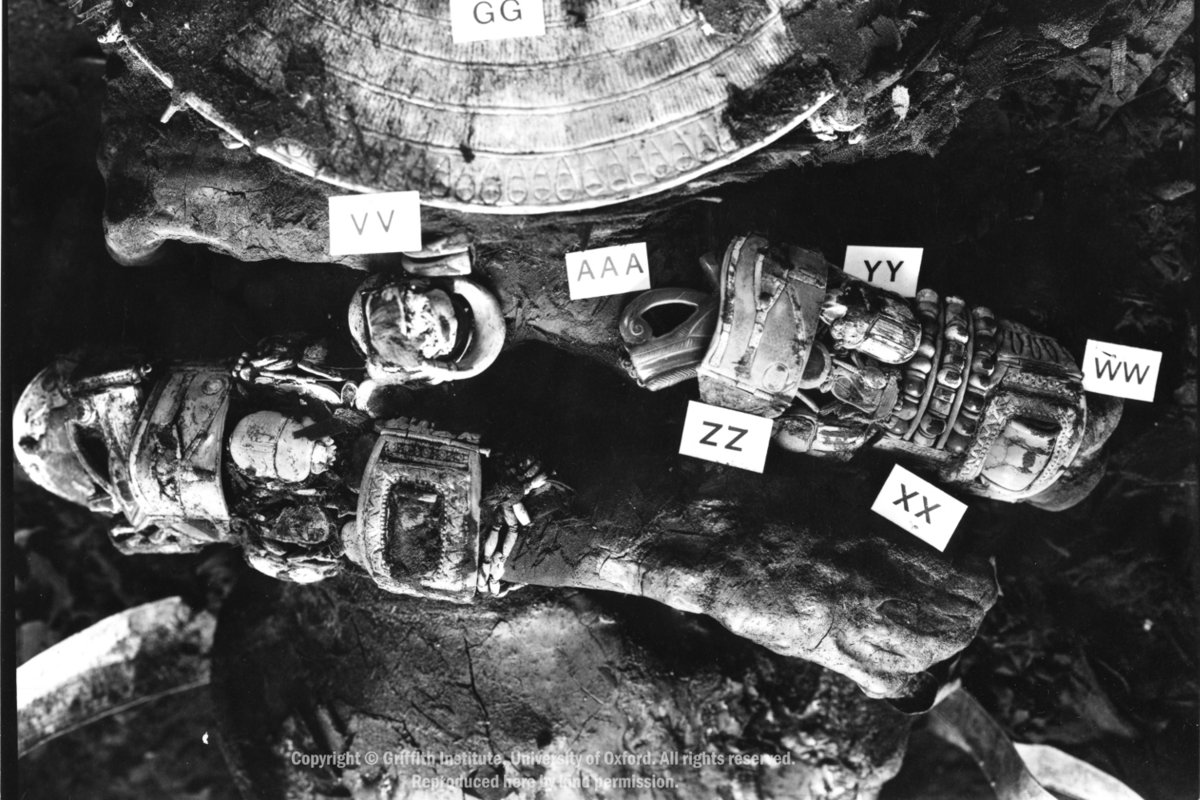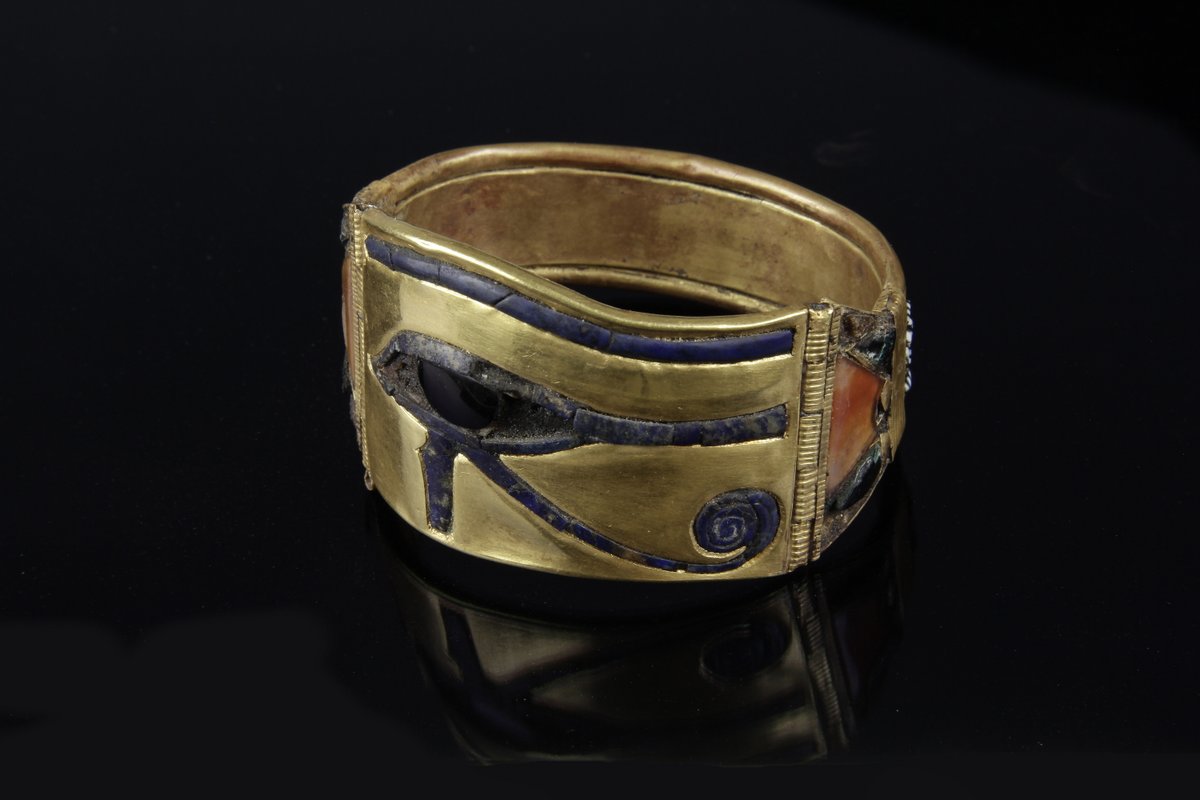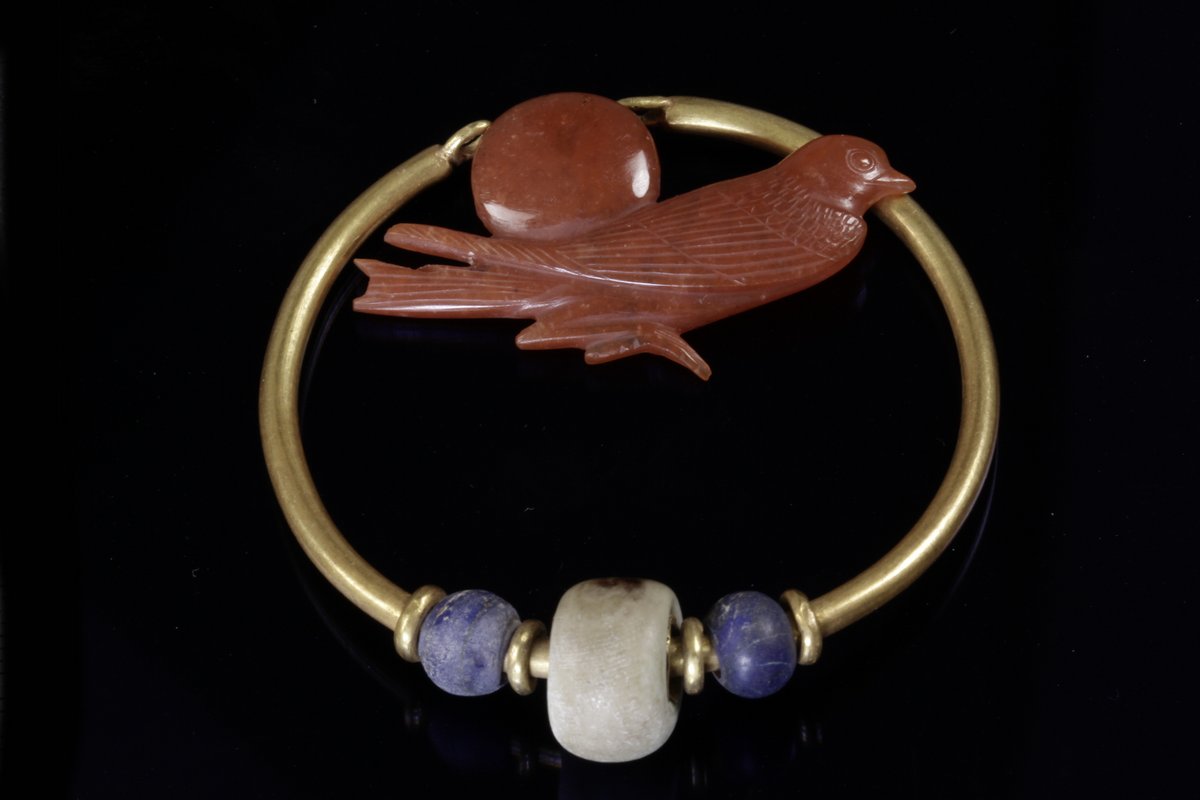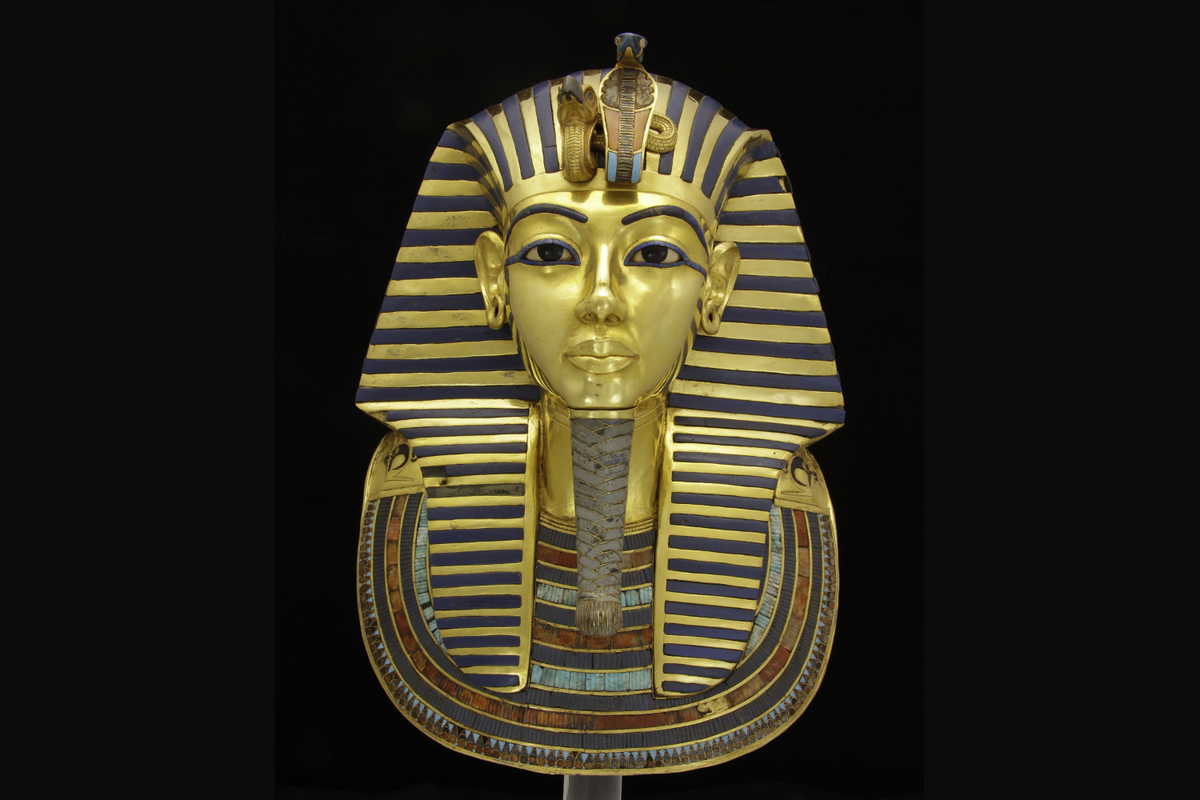You are what you wear – studies on selected works in gold from the tomb of Tutankhamun
Building on the research results of several projects carried out in 2014-2019 as well as on individual studies of selected finds – for example, the mummy mask, the diadem or an ornamental breastplate of Tutankhamun – a follow-up project was developed on the basis of various open research questions to investigate another outstanding object group of works in gold of the Eighteenth Dynasty in Egypt, those of the mummy trappings.
In addition to answering technological questions, special attention is also paid to various accessories which, in combination, represent the regalia (or several sets thereof) that the king may have worn during his lifetime. It is possible that specific groupings also allow further interpretation with regard to the funeral rite, for which the tomb itself ofers hardly any written evidence.
The comprehensive studies of the various manufacturing, repair and reworking techniques making up the goldsmith’s craft as well as of glasswork on more than 250 objects already reveal a highly interesting variety of procedures, and some of the manufacturing and decoration techniques are unique for this period.
If it were possible to name just one conspicuous feature common to all the objects, one in particular would have to be emphasised, even if it is not a technique or trait in the classical sense: the lack of arbitrariness.
Initial research findings make it clear that each object – even in its smallest parts and regardless of the quality of craftsmanship – follows a meticulous design.
These designs must combine iconographic, stylistic or artistic specifications with technological instructions for action and specific information on production as well as the selection of the materials intended for this purpose, to which a magical and religious (often apotropaic) effect was usually attributed.
The observations presented here can give only a general idea of the wide-ranging dimension of the deliberation that went into work and the expertise required for its execution.
The designs must therefore be seen as ambitious, overarching concepts that take into account a wealth of aspects from craftsmanship and material science, iconography, religious ideas and belief in the afterlife. Resulting objects and their combination with each other thus form assemblages that are composed of very different fragments – material and immaterial – and contain all the information about their conception and production as well as the meaning attributed to them in their practical and ritual functions.
On the basis of a targeted evaluation of the scientific studies and technological features as well as a (symbolic) re-fragmentation of these assemblages, it may be possible to reconstruct such concepts in an exemplary manner.
- Copy link
- Print article
Contact
- Katja Broschat
- +49 6131 8885-0
Team
- Katja Broschat
- Christian Eckmann
- Michael Ober
Project Period
- Since 01.2018
Support
2017 Funding for the sub-project "Tutankhamun's Mummy Mask - Chronography of an Icon" by the Federal Foreign Office of the Federal Republic of Germany and the Gerda Henkel FoundationMonographien
- K. Broschat / Ch. Eckmann 2022. Tutanchamuns Mumienmaske – Chronographie einer Ikone. Monogr. RGZM 162, Mainz: RGZM.
Aufsätze
- K. Broschat / E. Mertah, The circle closes. On the Diadem from the Tomb of Tutankhamun. Festschrift (2024) in Vorbereitung.
- K. Broschat / E. Mertah, Conceived, Created, Changed? An Armchair Study of the Golden Throne of Tutankhamun. In Vorbereitung.
- Ch. Eckmann / K. Broschat / T. Hardwick, Zur Frage einer möglichen Umarbeitung der Totenmaske Tutanchamuns. Journal of the American Research Center in Egypt 59.
Katalogbeiträge
- K. Broschat / Ch. Eckmann, A true icon: Tutankhamun’s gold mask. In: S. Connor / D. Laboury (Hrsg.), Tutankhamun, discovering the forgotten Pharaoh [Ausstellungskat. Liège] (Liège 2020) 74-75.
- K. Broschat / Ch. Eckmann, Une véritable icône. Le masque d’or de Toutankhamon. In: S. Connor / D. Laboury (Hrsg.), Toutankhamon, à la recherche du pharaon oublié [Ausstellungskat. Liège] (Liège 2019) 74-75.
Andere
- Katja Broschat, Aus dem Leben einer Ikone. Die Mumienmaske Tutanchamuns. Antike Welt 6, 2022.
- K. Broschat / Ch. Eckmann / S. Seidlmayer, Die goldene Mumienmaske des Tutanchamun. Archäologie in Ägypten: Magazin des Deutschen Archäologischen Instituts Kairo. 4 (2016).
- K. Broschat / Ch. Eckmann / S. Seidlmayer, The Golden Funerary mask of Tutankhamun. Archaeology in Egypt : Magazine of the German Archaeological Institute Cairo 4 (2016)



